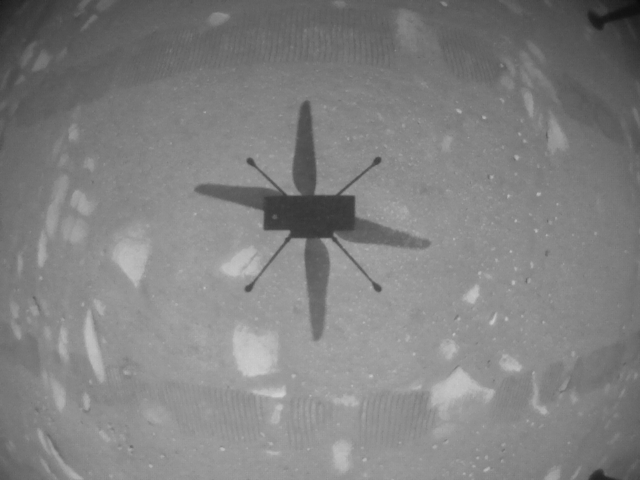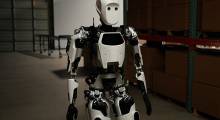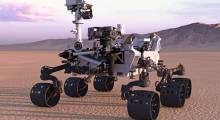After years of development and a journey of millions of miles, the Ingenuity Mars Helicopter flew for the first time today, marking the first controlled, powered flight on another planet. Data was received via the Perseverance Mars rover at 6:46 a.m. EDT (3:46 a.m. PDT).
“The Wright Brothers showed that powered flight in Earth's atmosphere was possible, using an experimental aircraft,” stated Håvard Grip, Ingenuity's chief pilot at the National Aeronautics and Space Administration's Jet Propulsion Laboratory (NASA JPL) in Pasadena, Calif. “With Ingenuity, we're trying to do the same for Mars.”
“Ingenuity is the latest in a long and storied tradition of NASA projects achieving a space exploration goal once thought impossible,” said Steve Jurczyk, acting NASA administrator. “The X-15 was a pathfinder for the space shuttle. Mars Pathfinder and its Sojourner rover did the same for three generations of Mars rovers. We don’t know exactly where Ingenuity will lead us, but today’s results indicate the sky – at least on Mars – may not be the limit.”
Developing a drone for Mars
Building an aerial drone for Mars was not as simple as stowing a conventional system in Perseverance's payload. Mars has a thinner atmosphere, lower gravity, and colder average temperatures than Earth.
Because Mars' atmosphere is only 1% of the density of Earth's, the 19.3-in.-tall (49 cm) Ingenuity weighs only 4 lb. (1.8 kg, on Earth), with two 4-foot-wide (1.2m) rotor blades. It must also withstand nighttime temperatures as low as -130°F (-90°C). The helicopter contains unique components, as well as off-the-shelf-commercial parts – many from the smartphone industry – that were tested in deep space for the first time with this mission, said JPL.
JPL, which is administered by the California Institute of Technology (Caltech) for NASA, also had to make sure that Ingenuity and Perseverance could survive the 293 million-mile (471 million-km) trip to Mars and land gently. They built on the experience of Mars landings since Viking 1 in 1975.
“The Mars Helicopter project has gone from ‘blue sky’ feasibility study to workable engineering concept to achieving the first flight on another world in a little over six years,” said Michael Watkins, director of JPL. “That this project has achieved such a historic first is testimony to the innovation and doggedness of our team here at JPL, as well as at NASA’s Langley and Ames Research Centers, and our industry partners.”
Perseverance is searching for signs of past microbial life on the red planet, studying geology and climate. The rover will be the first mission to collect Martian rocks and regoliths (broken rocks and dust). A future astrobiology mission by NASA and the European Space Agency (ESA) will send spacecraft to collect the sealed samples for return to Earth for analysis.
Because light and radio signals take about 3 minutes to travel from Earth to Mars—or back—“flight by stick” is not possible. Data from the Mars rover and helicopter is relayed between the two planets using orbiting satellites and NASA's Deep Space Network. The latency required JPL's team to develop onboard guidance, navigation, and algorithms for fully autonomous control systems.

First extraterrestrial flight
Ingenuity first became airborne at 12:33 Local Mean Solar Time (Mars time)—when the JPL team determined that the solar-powered helicopter would have optimal energy and flight conditions. Its altimeter indicated that the autonomous drone climbed to its prescribed maximum altitude of 10 feet (3 meters) and maintained a stable hover for 30 seconds. It then descended, touching back down on the surface of Mars after logging a total of 39.1 seconds of flight. JPL said it expects to receive more data for analysis.
The flight had been delayed for about a week because of the need to send a software update, but Ingenuity passed a second test last Friday. Ingenuity has one black-and-white, downward-facing camera and a color horizon-facing camera.
“Now, 117 years after the Wright brothers succeeded in making the first flight on our planet, NASA’s Ingenuity helicopter has succeeded in performing this amazing feat on another world,” said Thomas Zurbuchen, associate administrator for science at NASA. “While these two iconic moments in aviation history may be separated by time and 173 million miles of space, they now will forever be linked. As an homage to the two innovative bicycle makers from Dayton, this first of many airfields on other worlds will now be known as Wright Brothers Field, in recognition of the ingenuity and innovation that continue to propel exploration.”
Grip also announced that the International Civil Aviation Organization (ICAO) – the United Nations’ civil aviation agency – presented NASA and the Federal Aviation Administration (FAA) with official ICAO designator “IGY,” call sign “INGENUITY.” The location of the flight has also been given the ceremonial location designation “JZRO” for Jezero Crater.

Still a prototype
While Ingenuity's flight is a milestone in human technology and exploration, the helicopter has no scientific instruments, unlike Perseverance. It is intended as a demonstration that aerial operations are possible on Mars, noted NASA.
Parked 211 ft. (64.3 m) away at Van Zyl Overlook, the Perseverance rover not only acted as a communications relay between the helicopter and Earth, but it also chronicled the flight operations with its cameras. The pictures from the rover’s Mastcam-Z and Navcam imagers will provide additional data on the helicopter’s flight.
“We have been thinking for so long about having our Wright brothers moment on Mars, and here it is,” said MiMi Aung, project manager of the Ingenuity Mars Helicopter at JPL. “We will take a moment to celebrate our success and then take a cue from Orville and Wilbur regarding what to do next. History shows they got back to work – to learn as much as they could about their new aircraft – and so will we.”
Perseverance touched down with Ingenuity attached to its belly on Feb. 18. Deployed to the surface of Jezero Crater on April 3, Ingenuity is currently on the 16th sol, or Martian day, of its 30-sol (31-Earth day) flight test window.
Over the next three sols, the helicopter team will receive and analyze all data and imagery from the test and formulate a plan for the second experimental test flight, scheduled for no earlier than April 22. If the helicopter survives the second flight test, the Ingenuity team will consider how best to expand the flight profile, said NASA.
Perseverance and Ingenuity are part of NASA's strategy of unmanned exploration in advance of sending humans back to the Moon with the Artemis program and eventually to Mars.
About the Author
Follow Robotics 24/7 on Linkedin
Article topics
Email Sign Up
















